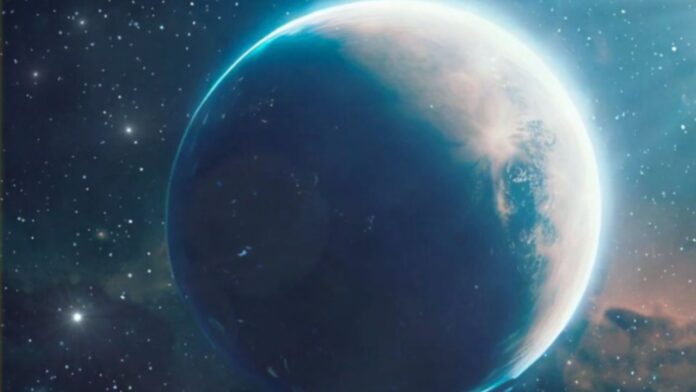NASA’s revolutionary James Webb Space Telescope has uncovered evidence of quartz nanocrystals high in the clouds surrounding exoplanet WASP-17 b, located 1,300 light-years away. This marks the first detection of silica minerals in an exoplanet atmosphere – a major surprise for researchers.
Within the constellation Scorpius, WASP-17 b has intrigued astronomers since its discovery in 2009. As one of the largest known exoplanets, WASP-17 b possesses a unique retrograde orbit moving opposite to its star’s rotation.
Read More: Best Scientific Discoveries in 2023
Its short orbital period of under 4 days also makes WASP-17 b ideal for techniques like transmission spectroscopy to study its atmosphere. But the new Webb observations have added to the mysteries of this outlier world.
Quartz Discovery Stuns Scientists Expecting Magnesium Silicates
While aerosols were anticipated in WASP-17 b’s high clouds, the quartz composition astonished scientists. They had expected to see magnesium silicate particles, commonly found on cooler exoplanets.
Finding silica alone challenges theories, said lead author David Grant of the University of Bristol. Co-author Hannah Wakeford agreed it reveals the “building blocks” of silicate formation.
Read Also: Most Mysterious Place in Our Solar System
On Earth, silicates with iron, magnesium and other elements are ubiquitous. But quartz nanocrystals have never been seen like this before astronomically.
Webb Data Reveals Spectral Spike Indicating Quartz Clouds
Webb gathered over 1,200 spectral measurements as WASP-17 b transited its star. An unusual spike at 8.6 microns stood out, pointing to quartz versus magnesium silicates.
The estimated millionth-of-a-centimeter crystals likely formed directly from hot atmospheric gases, unlike mineral clouds on Earth. This demonstrates the power of Webb’s precision observations.
Discoveries Refine Our Understanding of Exoplanet Evolution
The researchers believe these crystalline clouds provide insights into exoplanet compositions, chemistry and dynamics.
As Wakeford said, the beautiful silica crystals demonstrate the range of materials shaping distant worlds. Further study can reveal new aspects of exoplanet evolution.
WASP-17 b’s many eccentricities, including its retrograde orbit and now quartz clouds, defy current theories and offer clues to the true diversity of exoplanets. Webb is just beginning to unveil hidden wonders.




![Ranking US States: From Healthiest to Least Healthy [2024 Guide] Health Rankings US States](https://articleify.com/wp-content/uploads/2024/03/Health-Rankings-US-States-218x150.jpg)









![Technical Aspects of 844 Area Code in 2024 [Detail Guide] 844 Area Code](https://articleify.com/wp-content/uploads/2024/01/844-Area-Code-150x150.jpg)














